Some Chinese believe that Nian (”Nyehn”) was a reptilian predator that could infiltrate houses silently like the infamous man-eating leopards of India. The Chinese soon learned that Nian was sensitive to loud noises, and they scared it away with explosions and fireworks.
The Chinese New Year Day falls on the following dates in the Gregorian calendar:
| Year 2006 | Sunday | January 29, 2006 | Chinese New Year Day |
| Year 2007 | Sunday | February 18, 2007 | Chinese New Year Day |
| Year 2008 | Thursday | February 7, 2008 | Chinese New Year Day |
| Year 2009 | Monday | January 26, 2009 | Chinese New Year Day |
| Year 2010 | Sunday | February 14, 2010 | Chinese New Year Day |
Origin
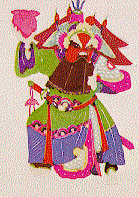
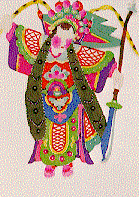 The origin of the Lunar New Year Festival can be traced back thousands of years, involving a series of colorful legends and traditions. One of the most famous legends is Nian, an extremely cruel and ferocious beast that the ancients believed would devour people on New Year’s Eve. To keep Nian away, red-paper couplets are pasted on doors, torches are lit, and firecrackers are set off throughout the night, because Nian is said to fear the color red, the light of fire, and loud noises. Early the next morning, as feelings of triumph and renewal fill the air at successfully keeping Nian away for another year, the most popular greeting heard is “gong xi fa cai”, or “congratulations.”
The origin of the Lunar New Year Festival can be traced back thousands of years, involving a series of colorful legends and traditions. One of the most famous legends is Nian, an extremely cruel and ferocious beast that the ancients believed would devour people on New Year’s Eve. To keep Nian away, red-paper couplets are pasted on doors, torches are lit, and firecrackers are set off throughout the night, because Nian is said to fear the color red, the light of fire, and loud noises. Early the next morning, as feelings of triumph and renewal fill the air at successfully keeping Nian away for another year, the most popular greeting heard is “gong xi fa cai”, or “congratulations.”
To ensure good luck in the coming year, the Taiwanese always give every dish a special name. This dish is called the “Five Blessings for the New Year” and represents longevity, wealth, peace, wisdom, and righteousness. (Photo by Su-ching Chang) Even though Lunar New Year celebrations generally last for only several days, starting on New Year’s Eve, the festival itself is actually about three weeks long. It begins on the twenty-fourth day of the twelfth lunar month, the day, it is believed, when various gods ascend to heaven to pay their respects and report on household affairs to the Jade Emperor, the supreme Taoist deity. According to tradition, households busily honor these gods by burning ritualistic paper money to provide for their traveling expenses. Another ritual is to smear malt sugar on the lips of the Kitchen God, one of the traveling deities, to ensure that he either submits a favorable report to the Jade Emperor or keeps silent.
Celebration
The Chinese New Year starts with the New Moon on the first day of the new year and ends on the full moon 15 days later. The 15th day of the new year is called the Lantern Festival, which is celebrated at night with lantern displays and children carrying lanterns in a parade.
10 Days before the New Year Day - Sweeping of the Grounds
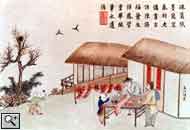 Preparations for the Chinese New Year in old China started well in advance of the New Year’s Day. The 20th of the Twelfth Moon was set aside for the annual housecleaning, or the “sweeping of the grounds”. Every corner of the house must be swept and cleaned in preparation for the new year. SpringCouplets, written in black ink on large vertical scrolls of red paper, were put on the walls or on the sides of the gate-ways. These couplets, short poems written in Classical Chinese, were expressions of good wishes for the family in the coming year. In addition, symbolic flowers and fruits were used to decorate the house, and colorful new year pictures (NIAN HUA) were placed on the walls (for more descriptions of the symbolism of the flowers and fruits.
Preparations for the Chinese New Year in old China started well in advance of the New Year’s Day. The 20th of the Twelfth Moon was set aside for the annual housecleaning, or the “sweeping of the grounds”. Every corner of the house must be swept and cleaned in preparation for the new year. SpringCouplets, written in black ink on large vertical scrolls of red paper, were put on the walls or on the sides of the gate-ways. These couplets, short poems written in Classical Chinese, were expressions of good wishes for the family in the coming year. In addition, symbolic flowers and fruits were used to decorate the house, and colorful new year pictures (NIAN HUA) were placed on the walls (for more descriptions of the symbolism of the flowers and fruits.

 New Year Paintings - During the Spring Festival (Chinese New Year), it is traditional to decorate the homes with new year paintings. The most popular paintings are Door Gods pasted on the front doors to keep ghosts and monsters away.
New Year Paintings - During the Spring Festival (Chinese New Year), it is traditional to decorate the homes with new year paintings. The most popular paintings are Door Gods pasted on the front doors to keep ghosts and monsters away.
Spring Couplets - Spring couplets are traditionally written with black ink on red paper. They are hung in storefronts in the month before the New Year’s Day, and often stay up for two months. They express best wishes and fortune for the coming year. There is a great variety in the writing of these poetic couplets to fit the situation. A store would generally use couplets hat make references to their line of trade. Couplets that say “Happy New Year” and ” Continuing Advancement in Education” are apprpriate for a school.
The New Year’s Eve - Reunio Dinner
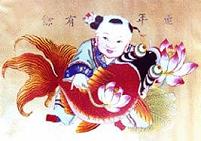 A reunio dinner is held on New Year’s Eve wher members of the family, near and far, get together for celebration. The New Year’s Eve dinner is very large and traditionally includes chicken. Fish is included, but not eaten up completely (and the remaining stored overnight), as the Chinese phrase “nian nian you yu”, or “every year there is fish/leftover”, is a homophone for phrases which could mean “be blessed every year” or “have profit every year”, since “yu” is also the pronunciation for “profit”.
A reunio dinner is held on New Year’s Eve wher members of the family, near and far, get together for celebration. The New Year’s Eve dinner is very large and traditionally includes chicken. Fish is included, but not eaten up completely (and the remaining stored overnight), as the Chinese phrase “nian nian you yu”, or “every year there is fish/leftover”, is a homophone for phrases which could mean “be blessed every year” or “have profit every year”, since “yu” is also the pronunciation for “profit”.
The New Year’s Eve celebration was traditionally highlighted with a religious ceremony given in honor of Heaven and Earth, the gods of the household and the family ancestors.
First Day of the New Year
New Year’s day is also celebrated within the family. Usually family members gather on the morning of New Year’s Day. It is at this gathering that red packets are given to unmarried members of the family. The age of the recipient is not material to receiving the packets. Married couples usually give out two red packets on the first new year after being married. This is because the wife presents one and the husband presents one. In subsequent years they may give one as a couple.
Red packets traditionally consisted of amounts which were considered multiples. Amounts like $2 (two piece of $1), or $20 were acceptable. Similarly “multiples” such as $1.10 and $2.20 were also acceptable. However, this is not strictly adhered to. The gift was originally a token amount but these days it is not uncommon to receive large sums in affluent families. In some families this tradition has evolved into the practice to substituting money-like instruments (stocks, bonds, unit trust) in place of large sums of cash.
Red packets are also given to unmarried visitors but the sums are often smaller than the packets given to family members or close friends.
Second Day of the New Year
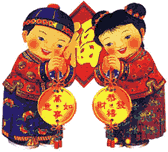
The second day of the new year is usually for visiting the family of the wife if a couple is married. A large feast is also typically held on the second day of the new year.
Seventh Day of the New Year
The seventh day traditionally is known as the common man’s birthday, the day when everyone grows one year older. It is also the day when tossed fish salad, yusheng, is eaten. People get together to toss the colourful salad and make wishes for continued wealth and prosperity. This is only celebrated amongst the Chinese in Southeast Asia, such as Malaysia and Singapore.
15th Day of the New Year - Lantern Festival
The New Year celebrations ended on the 15th of the First Moon with the Lantern Festival. On the evening of that day, people carried lanterns into the streets to take part in a great parade. Young men would highlight the parade with a dragon dance. The dragon was made of bamboo, silk, and paper, and might stretch for more than hundred feet in length. The bobbing and weaving of the dragon was an impressive sight, and formed a fitting finish to the New Year festival.When is Chinese New Year celebrated?
Chinese New year is celebrated on the first day of the first month of the Chinese calendar, which falls on the day of the second new moon after the day on which the winter solstice occurs, unless there is an intercalary eleventh or twelfth month in the lead-up to the New Year. In this case, the Chinese New Year falls on the day of the third new moon after the solstice. The next time this occurs is in 2033.
The New Year season lasts fifteen days. The first week is the most important and most often celebrated with visits to friends and family as well as greetings of good luck. The celebrations end on the important and colourful Lantern Festival on the evening of the 15th day of the month.
 English
English Japanese
Japanese Korean
Korean French
French German
German Spanish
Spanish Italian
Italian Arab
Arab Portuguese
Portuguese Vietnamese
Vietnamese Russian
Russian Finnish
Finnish Thai
Thai dk
dk